Blogs/ Technology
Our Experience in contesting in Meity video conferencing tool challenge
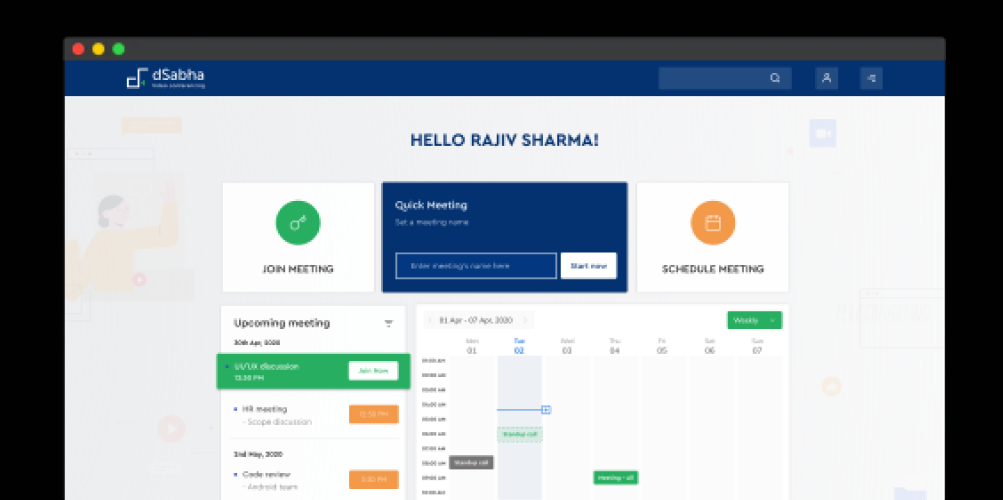
Video conferencing has been around for some time and is now gaining in popularity with this pandemic situation.
As part of Digital India Programme the Ministry of Electronics and Information Technology (MeitY) launched an innovation challenge for Indian startups to come up with a video conferencing tool, as people working from home have been dependent on various video conferencing applications to conduct their meetings with the coronavirus-led lockdown.
Introduction
In this blog post, we'd like to share our experience where we had a blast through an exploratory journey contesting for the innovation challenge launched by the Ministry of Electronics and Information Technology (Meity).
What is this Innovation challenge all about?
On April 13 2020, the government of India announced an innovation challenge for video conferencing solution under the Digital India initiative, where software startups and innovators from all over India can come forward and take part.
It also stated that the tool should have encrypted network communication, chat functionalities during the conference, option to Join a conference without signing in, and screen/file sharing among other things. Click here to access the full list of must-have features.
We were excited to take part in this challenge as we already have experience in building an asynchronous video recruitment tool, rekroot. We genuinely believe that video conferencing is an essential communication tool for the future, especially given the current conditions. Through this video conferencing tool, we want to curtail the distance and provide a contoured and effective way of communication.
We've created similar tools for both enterprise-size clients and smaller companies. Our approach and process are based on our experiences and the issues we've encountered so far.
The process
The innovation challenge will have three rounds. At the end of the first round, ten companies or startups will be shortlisted, and five lakhs each will be provided to build the prototypes. Eventually, in the second round, three startups/ companies will be selected and will be given ₹ 20 lakhs each to create the complete video conferencing tool
The best tool will be selected as the winner and gets a contract to launch their solution for use by the Indian government, state governments and other agencies. The winning company will be given one crore of funds for operations and maintenance of the solution for the government.
- The innovation challenge will have three rounds.
- In the first round, all companies will be given 5 mins to explain the solution.
- Ten companies will be shortlisted and be given 5 lakhs to build the prototype.
- In the second round, three startups/companies will be given 20 lakhs to build the complete video conferencing tool.
- The best of three will be selected as the winner and bag the contract to launch the tool with one crore of funds for operations and maintenance.
- The tool to be used by government, state government and other agencies
Timelines
Our Experience
Discovery
We came to know about this through a newsletter, and we registered on April 23rd. A team of 3 Business strategists, 1 UI/UX designer and a product designer along with co-founders started working on this project.
Research
First, we started with thorough competitor research of all the available video conferencing tools in the market. We gauged them by features, security, popularity, and disadvantages.
Ideas
Then the whole team brainstormed and collected all the possible ideas for features that can go into a video conferencing tool along with the rationale and the business use cases. We gathered about 59 ideas and discussed all of them over a video conference call (Of course!) and narrowed down and agreed upon 6 features.
UI and UX
We then worked on the UI/UX of the tool with the gathered information from the whole office through a series of questionnaires and polls to arrive at an optimum UX.
Then we started by creating the design prototype screen by screen with all the agreed-upon features along with the UX. We got on a video conferencing call again to discuss and finalize the design. Also, as part of understanding the whole process, we used several video conferencing tools to carry out our meetings. Each of us in the team was able to meticulously detect the UX flaws in each of the platforms, which gave us more confidence over our UI and UX.
As expected, the design came out great with very minimal changes given by the team, and since we had more time, we also designed more screens.
While the call ended, we wanted to come up with a striking name for our tool, all members of the team started to give their name ideas which were the usual cliched western names ideas. However, our chairman wanted a name that is more Indian and suggested ‘Sabha’ as the name to recollect, meeting, gathering or assembly which is the sole purpose of building this product
Later our CEO gave a digital touch to the name and wanted the tool to be called as ‘dSabha’ we made the ‘d’ in lowercase on purpose to discreetly represent doodleblue
Below is the design prototype we created for the solution
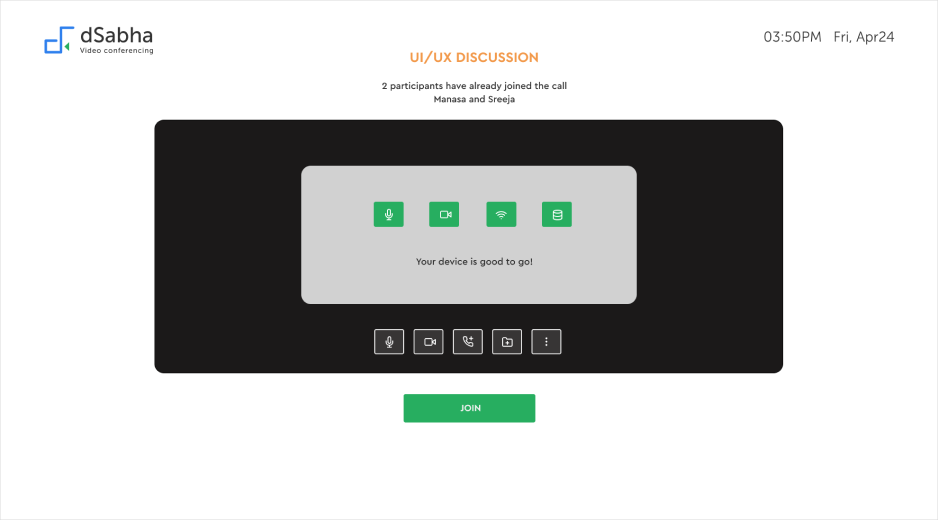

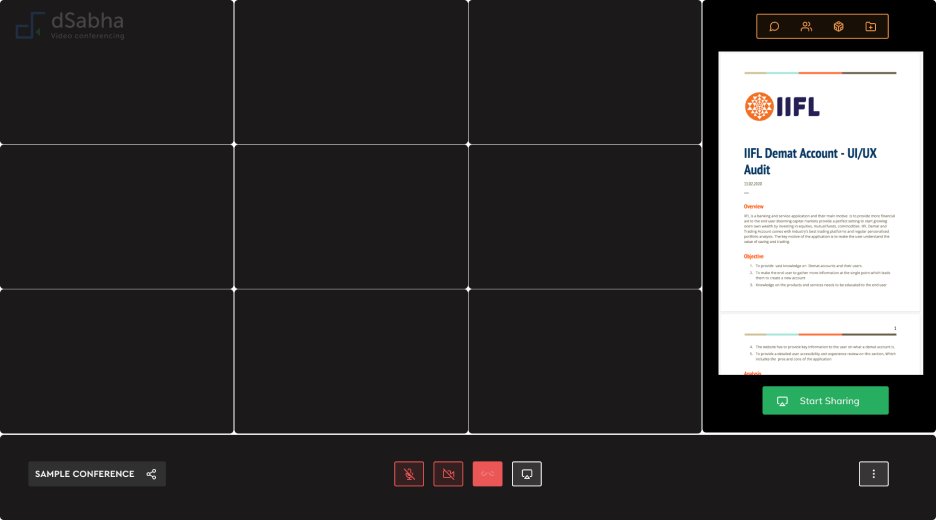
Presentation
Before the presentation, we had to log in to their portal to fill out the questionnaire on their website. There were nearly 20 questions, such as the company details, our expertise and questions related to the tool. We prepared appropriate answers for all the questions and submitted our proposal as a pdf with all our designs along with the guidelines. We kept our fingers crossed.
Screening
We got an email stating that we are invited for presenting our proposal in front of the Expert Group on May 21st 2020 through video conferencing. They had a three-step evaluation process, and we learnt that we got through the first step by submitting all the relevant documents and answering all the questions.
We were asked to submit our presentation, and only 3 minutes were given to complete the presentation, so we had to keep it short. We could also demonstrate our solution through a demo video.
We submitted a condensed Presentation explaining
1) Who we are
2) Why Us
3) What is unique about our product
4) Video Demo
The screening went well as a 5 min presentation could go.
Top 6 innovative features that we decided our video conferencing tool should have
While video conferencing does enhance communication, we also need a tool that has all the necessary features required to carry out virtual meetings effectively.
Bring to Attention"/ "Nudge
On the video screen, we can view the individual screens of the participants. A feature can be included as an option on the mini screen where a user can choose the option "Bring to Attention" This notification will appear on the screen of the receiver. A direct conversation can take place between the 2 participants.

Why do you need this feature?
It is challenging to establish perspective and point of view in an e-conference. A lot of participants end up talking to one another at the same time. Also, there are times a presenter might want to draw the attention of a particular individual. In this case, one can "nudge" another individual during a conference to establish a certain point with them.
It is challenging to establish perspective and point of view in an e-conference. A lot of participants end up talking to one another at the same time. Also, there are times a presenter might want to draw the attention of a particular individual. In this case, one can "nudge" another individual during a conference to establish a certain point with them.
Corporate Account Creation
As a part of the Sign Up process, we can introduce a "Corporate Account" creation feature. Here a corporate can create their own company profile, add different departments/ groups, and set the respective managers/ leaders. Detailed information needs to be given, such as company name, department name, manager name and designation, members of the respective group. Once the email IDs are entered, and the setup is complete, a mass invite will be sent to all the members. Upon accepting, the admin can manage all group-based, individual-based communications. External clients can also be added to a respective group for conference calls using the same methodology mentioned in the SOW. Automatic calendar integration.
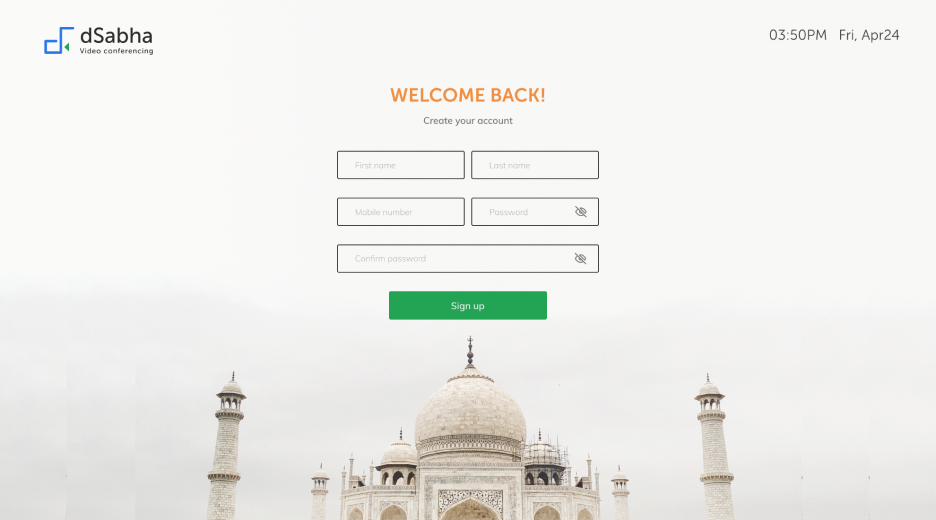
Why do you need this feature?
Companies can effectively manage their inhouse group and individual-based communication forums. They can also include external parties such as clients from other companies and have a merged conference with the team. By this method, a proper WFH communication channel is established. Records can be easily kept track of. Easy calendar invites can also be managed.
Selective Mute
The ability for the host to mute one or more speakers for everyone or vice versa to have private whispering kind of discussions
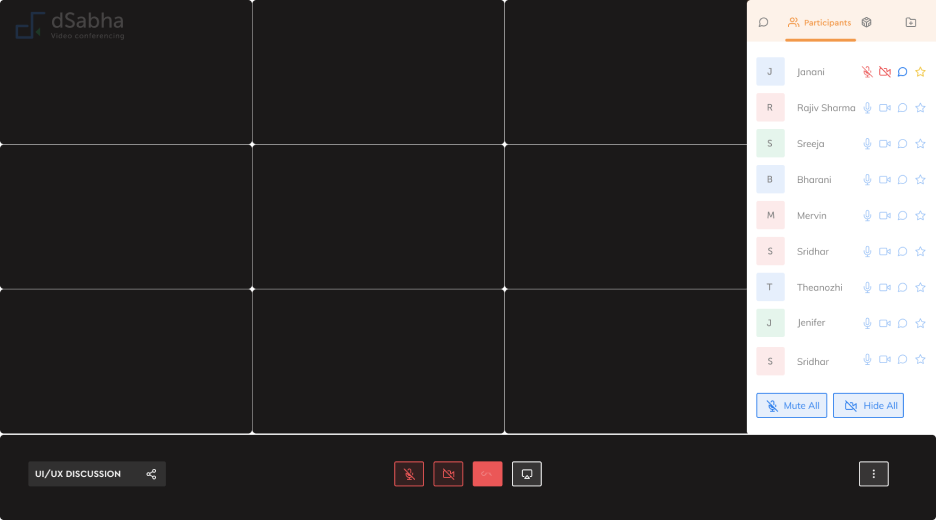
Why do you need this feature?
This will help participants to carry out private conversations within the meeting.
Crosstalk Warning
Multiple people speaking at the same time should be shown as a warning so that only one person talks at a time.

Why do you need this feature?
This helps to make sure only one person talks at a time for an effective crystal clear meeting.
File Display
Instead of screen sharing, it can be a document sharing and display that everyone will be able to see and interact. This document can be downloaded and also be saved within the meeting to access it all time.
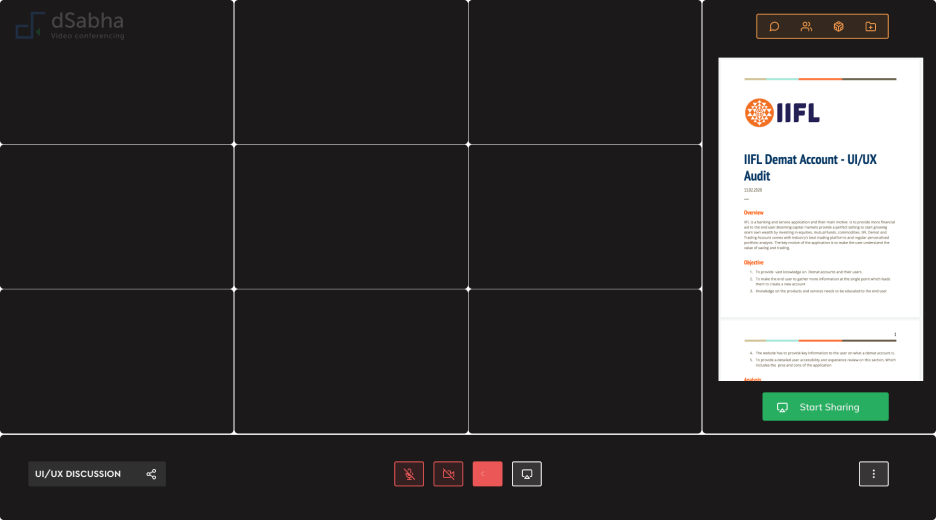
Why do you need this feature?
This eliminates the option to screen share instead the presenter can upload the file and select the files to display
Device check
Users should have a device check feature which will examine the user's device for - Audio, Video, Network and storage (This will help the user to set up their preference accordingly and have less problem in terms of connections and networks.
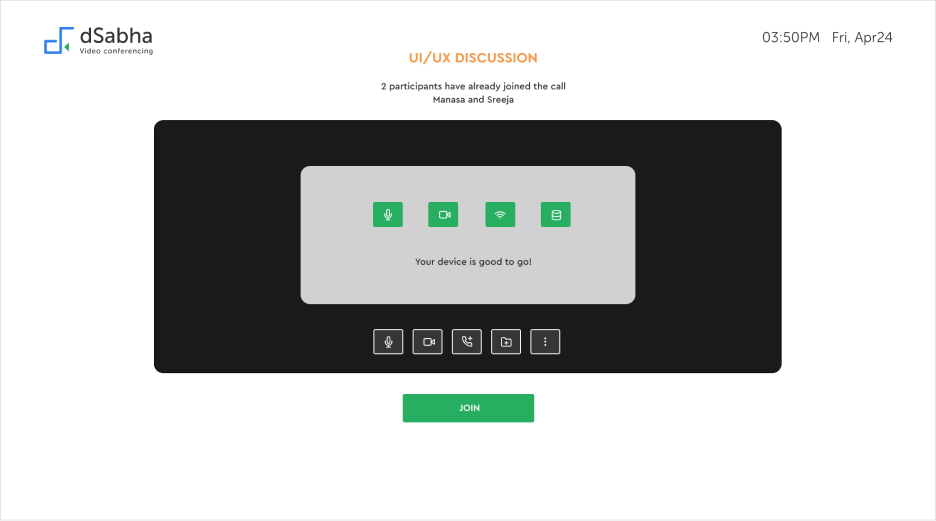
Why do you need this feature?
This helps users to identify the issues for connection problems in advance and can help him to fix or find alternatives.
Conclusion
We didn't make it. However, It was our small attempt at doing something for the country! We didn't worry about whether we would get selected or not, we loved the fact that we played to win.





